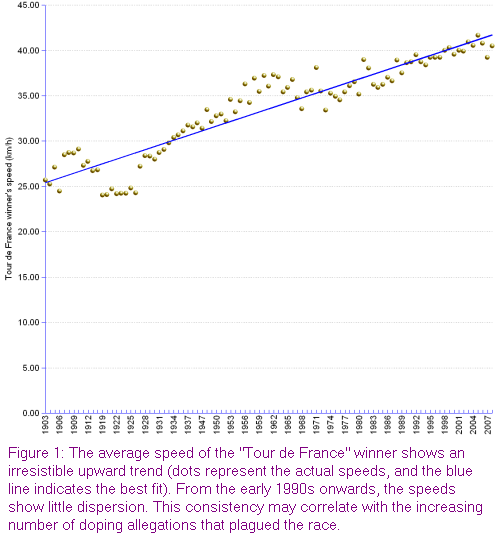
|
Insight : Doping: a necessity, not a sin |

|
|
You are here: areppim > Sports > Doping: a necessity, not a sin
Doping: a necessity, not a sin
 Sports officials speak of doping as if it were a devilish temptation to which only black sheep yield. They are blind to the facts. Everything leads to believe that, in sports, a professional must accept doping as a necessary practice in order to remain competitive.
Sports officials speak of doping as if it were a devilish temptation to which only black sheep yield. They are blind to the facts. Everything leads to believe that, in sports, a professional must accept doping as a necessary practice in order to remain competitive.
Some reminders:
- 2007, Marion Jones, 5-time Olympics medallist and twice world champion was stripped of all titles won since 2000;
- 2002, Winter Olympics in Salt Lake City, three athletes were expelled after being caught during routine doping tests;
- 2001, Nordic World Ski Championship, six skiers of the Finnish team pulled out for doping;
- 1988, Summer Olympics, the 100 m. medallist Ben Johnson, was stripped of his medal;
- Tour de France: the 1967, 1996, 1998, 2006 and 2007 races were blemished by a cascade of damaging scandals due to doping allegations.
In 2008, shortly after its start, the Tour was tarnished by one more positive performance enhancing drugs test and immediate expulsion of a rider. Despite past history, an optimist high-ranking official commented that the occurrence only proves that some individuals are willing to take stupid risks, and hoped that the case will be unique during the race.
The issue may not be that simple.
The Tour de France is an adequate metaphor of the drugs sports conundrum. According to author Pierre Ballester, quoted by the French weekly Le Canard Enchaîné, the ratio of cycling riders caught in the snare of doping is staggering. The number of those who have been sanctioned at some point in time reaches:
- 34% of all group riders;
- 60% of 10-top ranked riders;
- 72% of 3-top ranked riders;
- 85% of all winners.
A look at the average speeds of the Tour provides the clue (see Figure 1- the dots are the actual speeds, and the line the best fit). The trend shows an amazing 53% acceleration, from the Tour inception in 1903. The early 25.7 km/h reached up and stabilised close to 40 km/h in the 1990s, with a fast 41.7 km/h average in 2005.
According to both riders and sports physiologists, such a performance improvement should not be credited to better equipment, efficient training or sports nutrition alone. Mostly, it is the result of new performance enhancing drugs, such as the famous EPO (recombinant erythropoietin) that can cause the marrow to pump an additional 25% to 50% red cells into the blood, resulting in a 5% to 10% performance improvement. Mixed with other drugs, riders may expect another 5% to 10% improvement, a valued contribution to move closer to the winning positions.
The arithmetic is quite simple. A 10% increase in HCT (hematocrit, or percentage by volume of red cells in the blood) improves performance by more than 5%. This is equivalent to a gain of some 75 seconds in a 50-km time trial, or 80 seconds per 10 km, 10% steep grade climb.
Knowing that some contestants are likely to use miracle doping drugs, what can a professional athlete do? Obviously, the only options are to do likewise, or change profession. This is the reason why the phenomenon can not be viewed as an individual mistake, or an isolated behaviour.
The paradox is that, once all contestants start enhancing their performances by using doping drugs, the initial sports hierarchy will be re-established. The doped best athlete will still outperform the doped less good ones. But all of them will have ruined their health in the process.
Maybe the real race will take place amongst drug laboratories. The developer of the more effective and harder to detect doping drug will have a sure leading-edge over the laggards. Given the stakes, the advantage will be worth zillions.
(more in Scientific American, April 2008; Le Canard Enchaîné, 2 July 2008)
[Sources of Tour de France data:
Download


 Go toTop
Go toTop
 Home
Home